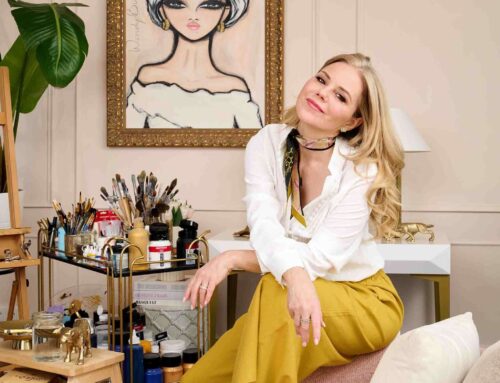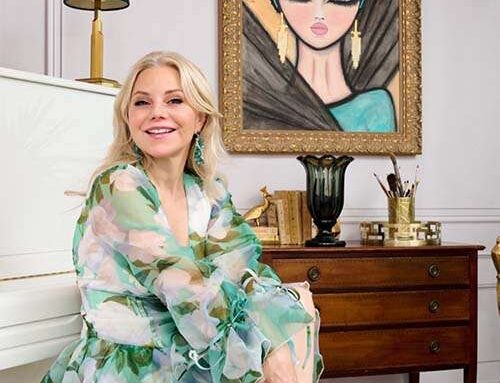How Beauty Standards Have Evolved Throughout History
How have beauty standards evolved throughout history? Did Cleopatra really bathe in milk? Was it necessary for women of the Renaissance Era to use leeches on their faces? And why were shorter haircuts the norm during the Roaring Twenties?
Find out the answers to these questions and more in today’s exploration of the evolution of beauty standards!
Hello and welcome to my blog! I’m thrilled about today’s topic because it combines two things I love: beauty and history. We’ll explore how beauty standards have changed over time, from ancient civilizations to modern-day society. Instead of covering every era, I’ll highlight key periods like Ancient Egypt, the Renaissance, the Victorian Era, and post-World War II.
Beauty Standards in Ancient Civilizations
Egypt
One of the first recorded beauty trends dates back to the first Egyptian dynasty in 3000 BC. Upper-class men and women used kohl, a black powder made from galena minerals, to outline their eyes. They also applied black, blue, and green eyeshadows made from lead and copper ores, like malachite and azurite. For cheeks and lips, they used a red ochre blend from iron oxide, symbolizing life and high social status.
The primary reasons for using makeup included showcasing wealth and status, protecting eyes from infections and the sun’s glare, and warding off evil spirits associated with the Eye of Horus. Egyptians also wore wigs made from human hair, wool, or plant fibers and had skincare routines using honey, olive oil, sesame oil, and milk. Cleopatra famously bathed in sour milk and enhanced her complexion with powdered crocodile excrement.
Ancient Greece & Rome
Ancient Greeks celebrated natural beauty with skincare ingredients like olive oil. They valued smooth, unblemished complexions reflecting youthful deities and mythological figures in art. Ancient Romans continued the Egyptian tradition of using kohl for eye makeup and rouge for cheeks and lips. They also emphasized elegance and aristocracy with pale skin achieved using chalk and white lead, despite the health risks.
During this time, Roman trade networks introduced diverse beauty practices from regions like Greece, Egypt, and the Middle East, enriching Roman beauty routines.
The Middle Ages
In Medieval Europe, pale skin symbolized leisure and high social status, as tanned skin was associated with outdoor labor. Beauty routines focused on natural ingredients like herbal extracts and plant dyes. Modesty was paramount, especially for women, who dressed conservatively due to strong religious beliefs centered around purity promoted by the Catholic Church.
The Renaissance Era
The Renaissance Era, known for extravagant fashion, jewels, scented oils, and symmetrical facial features, was heavily influenced by classical art and literature emphasizing proportion, symmetry, and balance. Fair skin, high foreheads, arched eyebrows, and oval-shaped faces were considered beautiful. Women used leeches to extract blood from their faces before big events, aiming for a pale complexion.
The Victorian Era
The Victorian Era prioritized natural beauty, modesty, and simplicity. Skincare involved herbal infusions, vinegar rinses, and lemon juice. Hair care included diluted pure ammonia, while makeup was minimal, limited to light rouge for cheeks and lips. Queen Victoria’s belief that makeup was for prostitutes and stage actresses led to a preference for a refined, makeup-free public image.
The Roaring Twenties & Beyond
The Roaring Twenties celebrated liberation, freedom, and revolution, especially for women who embraced short haircuts, bold makeup, and rebellious fashion influenced by the Art Deco movement. However, World War II necessitated simpler beauty routines due to resource shortages.
Post-war, glamour and sophistication made a swift return. Hollywood stars popularized vibrant red lipstick, winged eyeliner, and voluminous hairstyles. Innovations in skincare products like moisturizers, sunscreen, exfoliators, and anti-aging treatments became widespread, leading to the rise of beauty salons and spas promoting holistic beauty approaches.
Artists’ Depiction of Beauty
Art has always influenced beauty standards. In ancient civilizations, artisans and sculptors created statues with balanced proportions and harmonious lines. Renaissance artists like Leonardo da Vinci, Michelangelo, and Raphael highlighted the golden ratio (1:1.618) in their works, considered a standard of beauty.
Beauty ideals evolved through the Baroque and Rococo periods, emphasizing voluptuous figures and ornate designs, while Neoclassical artists preferred clear lines and balanced compositions. Romanticism focused on emotional expression, depicting women in nature in both simple and elaborate outfits. Modern art movements like Cubism, Surrealism, Abstract Expressionism, and Propaganda Art depicted beauty through dynamic compositions, dreamlike imagery, and raw emotions.
Modern-Day Beauty
We’ve come a long way from using toxic powdery lead, leeches, and diluted ammonia for beauty. Today’s beauty standards celebrate body positivity, self-love, and skincare. Social media platforms like Instagram, YouTube, and TikTok play a significant role in popularizing skincare tips, product reviews, and personalized routines.
Current beauty trends include:
- Natural makeup looks
- Sustainable beauty
- Dewy skin
- Bold eyebrows
- Gender-neutral beauty brands
- DIY beauty treatments
- Wellness and skincare supplements
- Anti-aging products
- Makeup techniques for mature skin
These trends are ever-evolving, and it will be exciting to see how they change in the future.
Subscribe For More Content
Thank you for joining me on this journey through the evolution of beauty standards! I hope you found it as fascinating as I did. If you enjoyed this post, please share it with our friends and leave a comment sharing your favorite beauty fact.
Say hi on Instagram @WendyBuiter, subscribe for more weekly posts, and check out my courses on WendyBuiter.Academy for tips on painting, marketing, and running your own business.
Until next time, cheers!








Leave A Comment
You must be logged in to post a comment.